Toyota Rumored To Launch 94 Mpg Compact Hybrid
Toyota will allegedly launch a new compact hybrid in January that will deliver a record low gasoline consumption of 40 km per liter. On a straight (non EPA) conversion, that would be a jaw-dropping 94 miles per gallon.
What’s less, the car “will not only beat the Prius’ 32km fuel economy, but also likely sell for around 1.7 million yen, around 300,000 yen cheaper than the Prius,” says The Nikkei [sub].
GM Considering Chinese Volt Assembly
The Detroit News‘s David Shepardson has a way of being on hand with a microphone whenever GM CEO Dan Akerson lets loose with a memorable line, and today he has Akerson telling a Bloomberg News Forum that the green star of the American auto turnaround, the Chevy Volt, could be built in China within a few years. Said Akerson
We’re going to export into China for probably a year or two and see if it gets a take … if customers set the right usage patterns. If it does, we may manufacture it there.
Roses Are Red, Hybrids Are Green… Except When They're Tuned For Power, Not Efficiency
From all the hype it gets, you would think hybrid technology is intrinsically green—and many Americans, including some policy-makers actually believe that. The Union of Concerned Scientists’ (UCS) new hybrid scorecard lays that canard to rest.
Jaguar C-X16 Concept Makes Us Forget The F-Type
AN: McAuliffe's Chinese EV Factory "Dead On Arrival"
Remember Bertels’ stranger-than-fiction write-up of former DNC Chair Terry McAuliffe’s Mongolian EV /Visa plant? Charles Child at Automotive News [sub] has looked at McAuliffe’s scheme and comes away less than entirely impressed, noting that
even casual scrutiny of his vision reveals overwhelming obstacles. Let’s be plain: His plan is dead on arrival.
You won’t find a zinger like that in Bertel’s piece, but only because he keeps his head down detailing the entire bizarre history of McAuliffe’s venture, its roots as the “Hybrid Kinetic Motors” visa scheme, its ties to a couple of notorious former Brilliance boys and its money-first, product-later approach. Child’s takedown isn’t as well researched (nor does it contain anecdotes about former a Ambassador driving a lawnmower into a swimming pool), but the few remaining folks out there who think the former Democrat fundraiser might be on to something big should probably read on. After all, McAuliffe has put so much hype out there, this story is something of a target-rich environment for truth-tellers.
GM, LG Team Up For "Single Purpose" EVs. Will Mark Reuss Let His Kids Drive One?
GM tightened its ties with Volt battery cell provider LG this week, announcing a deal to jointly develop next-generation electric vehicles. GM, along with the other Detroit-based OEMs, have been seeking closer ties with their suppliers, and as the JoongAng Daily reports, this deal helps LG at a time when the Korean conglomerate has been struggling
Two of LG’s pillars – LG Electronics and LG Display – are floundering. LG missed the boat on smartphones and persistently-low prices of display panels have plagued LG Display.
LG officials are hoping the EV project will give it momentum.
And though it’s no surprise that GM wants to move into the pure-EV market, its gamble on the extended-electric Volt has backed it into something of rhetorical corner.
The Future Of Electric Vehicles: Who? Where? When? How Much? How Many?
Forecasting the success of game-changing technologies is like predicting the weather. Despite a mediocre success rate, it is done every day. Ask me what the weather will be in 2017, and if I want to be absolutely right, I will say: “During the summer months, we expect sun with occasional rain, whereas in the winter months, some snow can be expected.” This prediction would protect my career in any company, but it won’t get me any press.
If I want press, I need to say: “In 2017, fire and brimstone will rain from the skies, which will cause a great conflagration, because all rain will have stopped a year earlier.” These predictions can be made with little risk. Six years down the road, who will remember the nonsense I said today? That thought crosses my mind as I read studies that predict the adoption of electric vehicles. Today, we have two of those. They couldn’t be more apart. We commissioned a third one.
Breaking: Ford And Toyota Cooperating On Trucks
Ford and Toyota will “equally collaborate on the development of an advanced new hybrid system for light truck and SUV customers.” A memorandum of understanding (MOU) on the product development collaboration, was signed today, with the formal agreement expected to be inked by next year. Both have been working independently on their rear-wheel drive hybrid systems. They have decided that it makes more sense to share the significant burden.
Are You Ready For: The Hybrid Camper Trailer?
Truth Versus Advertising: Sex Is Sexier Than The Environment Edition
With the environment taking an ever-larger place in automotive advertising, it’s interesting to note that Fisker’s latest brochure puts green in its place: behind sexy. Of course these sultry images [via BusinessInsider] aren’t free from environmental overtones, featuring taglines like “designed to get you hot, not the planet,” but it’s clear that Fisker is more heavily relying on the most traditional tool in the advertising playbook. Why? For one thing, even though Fisker is delivering Karmas, the EPA has not yet certified its efficiency rating… so we don’t even know how environmentally friendly it is yet. For another the Karma’s main rival, Tesla’s forthcoming Model S, is pure electric and therefore more appealing to wealthy environmentalists. Finally, unlike environmental messaging, sex doesn’t remind people that Fisker was the beneficiary of over half a billion dollars in government loans. Plus, sex is still, well, sexy. The more things change, the more they stay the same…
Chevy Volt: Ask the Men and Women Who Own Them
Volt owners gather before their parade down Woodward
Photos courtesy of Cars In Depth
As part of the festivities surrounding the Woodward Dream Cruise, GM organized a parade down Woodward and back up again made up of 50 Chevy Volts driven to the event by their owners, at their own expense, from around the country. As far as car company promotional events go it was fairly low key (I was asked not to publicize the pre-parade reception for the owners) but it was clearly a high priority item for GM. The Volt marketing team was out in force and they brought in NASCAR champions Jeff Gordon and Jimmie Johnson, who are racing at Michigan International Speedway this weekend, to wave green flags at the start of the Volt parade. Gordon and Johnson both own Chevy dealerships and they both personally own Chevy Volts. They race for Rick Hendricks, who owns quite a few Chevy (and other GM) stores himself. There were news teams from at least two of the Detroit tv stations and a satellite truck that I believe was used for a national network or cable interview of the NASCAR drivers. GM also brought out a number of pace cars from their private stash of Camaros, Corvettes and even one Chevy SSR that paced races at Indianapolis and Daytona. There was also the ZR1 that set a lap record for production cars at the Nurburgring. Marketing being what it is, the parade also included 2 squadrons of Chevy’s most recent new product, the Camaro convertible and the subcompact Sonic. There were 100 cars in total, one for each year in Chevy’s current centennial.
There were t-shirts and baseball caps for the guests, and the Volt owners each got a nice die cast model of their car, but the Volt owners weren’t there for the swag or for autographs, though they eagerly accepted both. The Volt owners were there because they really, really, really like their cars.
GM Approves "CadiVolt" ELR For Production
Nearly three years ago, I penned an entry to TTAC’s Volt Birth Watch entitled “You Should Have Been Born A Cadillac.” True to its name, the piece argued that,
the Volt’s bailout-fodder status requires some kind of volks wagen appeal; while a $40k Chevy is a tough pill to swallow, a taxpayer-funded [Volt-based] Cadillac could create a nasty backlash.
Now that the taxpayers are off of GM’s radar, the plan is going through: GM has announced that it will build a production version of the Converj concept, to be called the “ELR” per Caddy’s alphanumeric naming scheme. Rollout, pricing and performance targets haven’t yet been released, but a production-intent concept will be shown at the upcoming Pebble Beach Concours d’Elegance. And though more profit out of an already-developed drivetrain makes worlds of sense, GM now has to explain why its luxury brand is getting Chevy’s leftovers with a freshly tailored suit. Hopefully GM will pull off this relatively minor PR hurdle with more aplomb than, say, Lincoln’s attempts to explain that features available in most Fords, like EcoBoost and SYNC/MyTouch, are what makes its cars so luxurious. After all, shouldn’t luxury brands be at the technological forefront, with features trickling down into the mass-market brands?
Hybrid Consideration On The Rise In Germany While Diesel Drops And EV Outlook Remains Weak
With US gas prices at some of the lowest levels in the world, it’s not too surprising that US consumers aren’t overly anxious to go electric, but what about in Germany, where gas prices are near double the US’s? According to Thilo Koslowski of Gartner Research, interest in EVs remains low there as well, and the big gainer in recent years has been hybrid technology… at the expense of the once-ubiquitous diesel, demand for which has “peaked” according to Koslowski’s research. Says the man who coined the term “ the trough of disappointment,”
Although the majority of German consumers continue to see EVs’ benefits in environmental and socioeconomic implications, broad adoption of EVs will remain low as long as current offerings don’t meet drivers’ practical usability and cost-saving requirements. To expand from early to mainstream EV adopters in Germany, automotive companies must focus on technology innovations, offer pricing strategies that are aligned with established premiums for diesel and hybrid powertrain options and develop diverse EV model mixes targeted at younger consumer segments that have higher EV interest levels than older demographics… E-mobility will become a viable addition to future transportation scenarios in Germany, but automotive companies and the German Government must address marketability requirements of EVs, prioritise technology investments and continue to promote cross-industry collaboration. Future mobility concepts will consist of diverse powertrain choices and business models that will leverage technology to satisfy consumers’ transportation needs while challenging traditional car ownership.
Flopping Tata Nano Prompts Talk Of Overseas Production, Styling Changes, Diesel and Hybrid Options
Tata’s Nano was launched with much fanfare in 2009, as the world’s cheapest car and a symbol of India’s automotive and economic aspirations. But first Tata had problems with its factory, which was to be built on land [allegedly] stolen from local farmers. Then, early last year, the cars started catching fire and refused to stop. Then finance was the issue, and when Tata revamped its finance, advertising and retail presence, it looked like things were beginning to improve. It turns out the bump was short-lived. After hitting 5k monthly sales last December, volume has fallen again dropping to 3,260 units in July (1/8th the volume of its main rival the Maruti Suzuki Alto) according to indiancarsbikes.in, which reckons
Startlingly, the most fuel efficient petrol car in the country, which is the most inexpensive too isn’t finding takers in a market troubled by high petrol prices and rising loan interest rates, that is clearly favoring cheaper and more fuel efficient cars… the market isn’t biting and the Nano sales have begun the downward spiral, this time continually.
So, what’s Tata going to fix to get its attempt at “India’s Model T” back off the ground. How about “everything”?
Mazda Is Cooking With Gas, Hates The Strong Yen
In an interview with The Nikkei [sub], Mazda’s President Takashi Yamanouchi mounted a spirited defense of the internal combustion engine. He said it won’t go away anytime soon. He thinks the ICE will remain a mainstream option, especially in emerging markets. As proof he points to the recently launched Demio subcompact, which gets similar mileage as a Honda hybrid.
Yamanouchi does not believe that hybrids or EVs will make a huge dent into the market, especially not in the emerging markets, where money is tight.
“The size of the global auto market is now at roughly 60 million units, but it will top 100 million sooner or later. Though we factor in opinions from outside the industry, the share of hybrid and electric cars in the global market will probably not exceed 5% in 2020. That means gasoline-powered cars are expected to continue to dominate the market.”
I, BMW
What Happened To Hybrid Kinetic Motors?
Remember Hybrid-Kinetic Motors, the hugely ambitious venture by former Brilliance Chairman Yung Yeung that was supposed to build 300k physics-defying hybrids per year at a brand-new $1.5b Alabama factory (with the modest goal of producing a million vehicles per year by 2018)? H-K Motors was never taken very seriously here at TTAC, and despite appearing to be a visa scam, the firm signed a $500m design deal with Italdesign/Giugiaro, and was reportedly working with a German engineering firm… and Alabama’s Baldwin County sure took the firm seriously. Unfortunately, al.com reports that
In 2009, Chinese company HK Motors had taken notice of the megasite and announced plans to build a $4.36 billion green energy automobile manufacturing plant that would employ 4,000 workers.
Under a plan unveiled two years ago, the Pasadena, Calif.-based subsidiary of Hybrid Kinetic Group Ltd., of Hong Kong, would start production in Baldwin County in 2013. The cars built there would run mainly on compressed natural gas, backed up by electric batteries and a small gasoline tank.
The company announced that it expected to build 300,000 vehicles each year at the outset, with production increasing to 1 million by 2018 by 5,000 local employees. The company purchased a battery manufacturer and other component businesses in subsequent months.
But local officials said last month they would be marketing the site to other companies with HK Motors apparently unable to secure financing for the venture.
I’m sure nobody’s surprised by this at all… after all, I never found anyone who believed a word of the Hybrid Kinetic mumbo-jumbo. But what reminded me of the H-K fiasco, and what led to me to find that it had officially abandoned Baldwin County (after it shouldered $70k in surveying costs, no less) was news that a hybrid van manufacturer is setting up shop in St Louis, which has lost Ford and Chrysler plants. What reminded me of the H-K situation? “Emerald Automotive Limited,” which is promising 600 UAW-represented jobs and gas- and diesel-electric delivery van production by the end of next year, doesn’t have a freaking website. That’s never a good sign…
Toyota Hybrid IP Under Attack Again
Over the last several years, Toyota has fought off suits by a firm called Paice, which claimed to own patents on technology used in Toyota’s hybrid drivetrains. Toyota settled that dispute a year ago, but now Bloomberg reports that another firm is going after Toyota’s hybrid Intellectual Property (IP). According to the report
Efficient Drivetrains Inc., based in Palo Alto, California, has an exclusive license from the University of California for use of the technology, including the way electricity is drawn from a battery to power an electric motor and an internal combustion engine, according to a July 20 federal court complaint filed by Toyota in San Jose… The five patents at issue also include technology, invented by EDI co-founder Andy Frank, on ways to control the power output of an internal combustion engine and a method to draw electricity to operate the electric motor and the internal combustion engine, together or separately depending on driving conditions
You can read Toyota’s complete filing here.
How Can A Small Hatch And Supercar Share Design?
BMW’s forthcoming “i” series of high-efficiency vehicles will launch as a two-vehicle brand, spanning the gap between high-end hybrid supercar (i8) and small, premium, rear-drive electric hatchback (i3). So, how can BMW style two such divergent vehicles in such a way that both fit into the same brand? That’s the subject of this video, which previews some of the design cues that mark these cars as BMWs, but also as “i-cars.” And if you’ve forgotten what an “i car” is (something BMW doesn’t want anymore than people forgetting what an “M Car” is), hit the jump for a brief video refresher…
GM Plans Opel Flagship As "Technological Spearhead" (Or XTS Rebadge?)
With Opel planning to pull itself into the black within the year, the brand’s thoughts are turning from survival to “luxuries” like a flagship model planned for around 20k units starting in the 2016-2017 timeframe. Codenamed “TOL” for “Top Of Line,” the sedan will be designed to highlight one of GM’s many alt-drivetrain technologies, but according to Automotive News [sub], nobody yet seems sure which. Opel labor rep and recent champion of the brand’s forthcoming products Klaus Franz explains:
Already with the our Ampera electric vehicle, we have shown what we are able to do and enjoy an advantage of two to three years compared to the competition
But with the TOL is planned for 2016, Opel may have to dig deep to jump out ahead of the market, which is why a fuel cell-powered electric drivetrain is being considered (also, after decades of FCV research, GM has to build a production model someday). And if the eventual product has a truly ahead-of-its-time drivetrain, and looks as good as last year’s Flextreme Concept (above), this flagship could be an exclamation point on Opel’s turnaround. Unfortunately, neither of these things are a given…
California Cuts Green Car Incentive In Half
California has backed up its strict emissions standards for years now with a $5,000 tax credit for electric, hybrid and fuel cell vehicles, which when combined with a $7,000 federal tax credit can often make those vehicles nearly as affordable as “regular” cars. But, reports Automotive News [sub], that state credit has fallen victim to California’s budget woes and oversubscription, and has been cut in half from $5,000 to $2,500. According to the report:
high demand exhausted the program’s funding last month. The Los Angeles Times reported Thursday that about 500 consumers who bought electric cars such as the Nissan Leaf or Tesla Roadster are on a waiting list and will collect the $2,500 rebate.
To deal with growing demand, the pool of money to fund the rebates was increased to between $15 million and $21 million for CARB’s current fiscal year ending June 30, 2012, according to CARB’s announcement. A total of $11.1 million was allocated in the program’s first two years, according to CARB spokeswoman Mary Fricke.
The increased cash pool and lowered rebate amount are aimed at making the incentive available to more consumers, according to CARB’s Web site. The changes are projected to fund about 6,000 rebates for consumers who apply for the program on a first-come basis, Fricke said.
Now California “green car” intenders not only get a reduced tax credit, but they also don’t get free access to the HOV lane anymore. It’s almost as if California wants “green” vehicles to succeed or fail on their own terms…
"Super Credits": The CAFE Loophole That Might Have Been (And Could Be Again)
The Michigan Congressional delegation’s letter, stating that the Detroit-based automakers are not technologically capable of serving the market while complying with a proposed 2025 CAFE standard seemed strange to me in light of the recent progress made by Ford and GM on fuel economy. Why, I wondered, would these firms boast of their fuel econmy efforts on the one hand while allowing their congressional representatives to portray them as unable to build a CAFE-compliant fleet on the other. Why, I wondered, don’t Ford and GM come out and angrily insist that they can build the most fuel efficient cars in the world? My guess: because they know that they can probably wheedle a loophole out of the feds if they keep pleading inability. Yes, everyone knows they can comply with CAFE… but even the UAW knows that when the government asks you to do something, you ask for something back. Which in turn made me wonder: what might the OEMs want? And, turning to the 2012-2016 CAFE Final Rule [go on, give it a read in PDF format here], I found a glaring loophole that all the manufacturers seemed to want, but which the feds turned down. I have no evidence that this is back on the table for 2017-2025, but I thought I’d put it out there to give a sense of what the OEMs may be pushing for by pleading inability to comply with the proposed 2025 standard.
UAW Backs "Strong" Emissions Standards After All… For A Price
Last week I wondered aloud about where the UAW stands on fuel economy, inspired by the union’s apparent flip-flopping between supporting the companies that employ its workers and backing its environmental allies on the left with talk of its commitment to green jobs. And after expressing concern about proposed CAFE increases, it seems the UAW is flopping back towards the environmentalist side of the equation, joining the so-called “Blue-Green Coalition” of labor leaders and environmental groups in expressing its vague support for “strong” emissions standards in a letter to President Obama [ PDF]. But with CAFE negotiations coming down to within 5 MPG or so of a final “number” for the 2052 standard, the letter’s lack of commitment means it’s still not clear where the UAW comes down in the policy debate. So instead of highlighting the union’s commitment to the environment, the letter ends up serving as a window into the UAW’s cynical, yet self-deluding side.
Toyota To Offer A Different Kind Of Plug-In
Toyota may not be making pure EVs widely available next year as some outlets are reporting, but it will start offering a different kind of plug-in car in 2012. We’ve already heard about Toyota’s experiments with a bi-directional charger that could serve as a backup power source for your home in an emergency, but Toyota is taking the car-as-powerplant theme a bit farther next year, as Automotive News [sub] reports
Next year, will start offering AC electric outlets as an option on its popular Prius hybrid so drivers can plug in household appliances — from computers to refrigerators.
The idea was born from watching victims of Japan’s March 11 earthquake using the Toyota Estima hybrid van as a source of emergency electricity when the power was knocked out.
It is the only Toyota model currently offering a standard AC outlet.
But Toyota wants to add them to the Prius next year and eventually across the hybrid lineup. One hitch: It will be offered only in Japan initially. Concerns about different voltages and safety regulations are keeping the technology off export models at least at the start.
Toyota may be only offering the system in Japan at first, but this step offers a fascinating insight: clearly Toyota believes consumers would rather take electricity out of their cars than put it back in. It’s a new interpretation of the plug-in concept and one that, as a blogger who’s always looking for on-the-go laptop power, I can certainly appreciate.
Where Are Our Green Car Priorities?
As a relatively pragmatic person who generally chooses the imperfect-yet-achievable path rather than agonizing over the perfect-but-unattainable goal, this chart [from a fascinating Boston Consulting report, in PDF here] frustrates me. I understand why Americans choose hybrid-electric cars as their most favored “green car” technology, but from their it gets fairly crazy. EVs are fantastic on paper, but in the real world they’re still far too expensive, their batteries degrade, they have limited range, oh and did I mention that they’re freaking expensive? Biofuels, America’s third-favorite “green” transportation technology can be fantastic in certain limited applications, but the ongoing ethanol boondoggle proves that it will never be a true “gasoline alternative.” Finally, at the bottom of the list, Americans grudgingly accept only relatively slight interest in the two most promising short-term technologies: diesel and CNG. Neither of these choices is radically more expensive than, say, a hybrid drivetrain and both are considerably less expensive and compromised than EVs at this point. So why are we so dismissive of them?
What's Wrong With This Picture: The New Efficiency Edition
The transition from exclusively gasoline-powered vehicles to the new panoply of permutations of gas and electric power has not been easy on the old emm-pee-gee. The imperfect-yet-universal (in the US market) measure of efficiency finds itself at a loss to compare an electric car’s efficiency with that of a gas-powered car, and completely falls apart as a relative measure of efficiency between plug-in-hybrids which use gas and electricity in different ways (see the ongoing battles over the Chevy Volt’s efficiency). Into the breach have stepped several challengers to the emm-pee-gee’s supremacy, including the weak MPGe (which was responsible for the Volt’s disastrous “230 MPG” introduction), and the “Kilowatt-hours per 100 miles” measure championed by Motor Trend in a rare display of admirable pointy-headedness. But the Gordian contradiction of efficiency measures is that they must be both accurate and easy-to-understand… and if the MPG’s history tells us anything, it should probably err on the side of the latter prerogative.
Was, Ihr Volt Ampera? Vergessen Es!
End of the year, Europeans can delight in the Made in America Opel Ampera, which is a rebadged and slightly reskinned (see picture) Volt. But don’t rush to your friendly Opel dealer to put in your pre-order: The Ampera is already sold out.
Quote Of The Day: The Obsolescence Of Volt Edition
Fortune [ via CNN]’s Alex Taylor III is clearly as disappointed as I was with Joe Nocera’s toothless, vaguely pro-Volt piece in last Sunday’s NY Times, and he’s riled up enough about it to lay down a savage call-out the Volt hype machine. In fact, it’s a less scientific, less comprehensive (and, by virtue of the passage of time, less speculative) version of a piece my father wrote in 2008, comparing the then-undelivered Volt with the also unlaunched 3rd gen Prius and Plug-In Prius. Taylor’s foil for the Volt is the plug-in Prius, which now arrives in less than a year, and in the eyes of the longtime industry writer, the contrast is stark:
Volt enthusiasts like to recite the fact that the Volt can go 35 miles on battery-power and then shift seamlessly into gasoline-engine mode, saving on gas and reducing emissions of greenhouse gases. It is an impressive technological improvement but one that is already obsolete.
Here’s why:
While The Pope Goes Green, Mortals Get Gas
The Pope is working on his green creds. When the German Pope Benedikt XVI will come to Germany in September, he will wave at the faithful from a plug-in hybrid. Made in Germany, of course. Mercedes is putting the finishing touches on a new popemobile. Based on the new M-Klasse, it is powered by a 60 hp hybrid module. The lithium io battery will supposedly be rechargeable in 60 minute, allowing the Pope to travel for 30 kilometers (18.6 miles) on heavenly electrical power alone. Once depleted, the ICE kicks in.
Why no pure plug-in?
Reuters: Honda Fit Shuttle US-Bound
Plotting The Electrified Future: BCG Downgrades EV Penetration, Pacific Crest Offers Bear And Bull Cases
Reuters reports that Boston Consulting Group has revised its projections for EV market penetration downwards, concluding that plug-in electric vehicles (including EREV and PHEV models) will make up no more than five percent of the US market by 2020. And ironically, the recent increases in gas prices have actually driven the estimate downwards, as Xavier Mosquet, the global head of the group’s autos practice, tells The WSJ [sub]
Electric cars will undoubtedly play an increasingly large role in many countries’ plans in the decades ahead as energy independence and environmental concerns intensify, but they will gain only modest ground to 2020. Gas- and diesel-powered vehicles are improving faster than expected and will continue to dominate the global landscape.
Hammer Time: The Boss Killed My Car
Your worst nightmare. A pleasant drive along a yawning rural two-laner is met by a sudden ‘jolt!’ You quickly take your foot off the accelerator. Was it a transmission shudder? A miss in the engine? Some gravitational push from a UFO? After a couple of mini-jolts it looks like problem number one. You do what you can to not stress the tranny. But it gets worse and worse until ‘jolt!’ ‘JOLT!’ ‘Veeeee!!!!’ The engine spins over to the high rpm’s with nothing left to propel it. The tranny is toast… and now the fun begins.
Suzuki To Sell Plug-In Hybrid Swift
Suzuki will finally relent and will offer a plug-in hybrid version of its bestselling Swift hatchback. A lithium-ion battery will power the car for the first 30km (18.6 miles), then a gasoline engine will produce the juice, says The Nikkei [sub].
Ford Cancels 7-Passenger C-Max For US, Now Coming As Hybrid/Plug-In Only
When Ford showed the world its new crop of compact-based cars and MPVs at January’s Detroit Auto Show, it announced that its C-Max compact MPV would be coming to the US in 7-passenger Grand C-Max form. But in a strangely prophetic turn of events (see video above), the 7-passenger model refused to show up. Now, according to Ford, the 7-passenger Grand C-Max won’t be coming to the US… instead the 5-passenger version will be sold as a dedicated hybrid model with a plug-in option. Why? Because it’s big in Europe… and because “One Ford.” Hit the jump for Ford’s explanation, and then wonder along with us: seriously, why not sell the 7-seat version too?
What's Wrong With This Picture: Fuel Prices Versus Hybrid Sales Edition
The Alliance of Automobile Manufacturers is taking to the internet ahead of a forthcoming increase in 2017-2025 CAFE standards, with a website called “ Consumers and Fuel Economy.” There you can find, among other things, this graph detailing the relationship between hybrid sales and fuel prices over the last three… summers? Did the fall and winter data not support the AAM’s goals? If so, and this graph has been constructed for maximum impact, it’s hardly a wildly convincing slice of data… or is it?
Babe Magnets Gone Hybrid: We Pickin Up Their Chicks In Our TOYOTA PRIUS
I’m just beginning to figure out that Twitter thing, and there it was:
“ ToyotaPR Scott Brownlee RT @YouTubeLMAO: @ToyotaPR Made this Hybrid Music Video for Toyota. http://youtu.be/8H-yUQZ9uqM
Say what?
UN: Recycling Rates For Key Green Car Elements Below 1%
A report by UNEP [ PDF here], the UN’s environmental body, finds that recycling rates for some of the key ingredients in EV and Hybrid cars are woefully low. The chart above shows “functional recycling rates” for 60 metals, and the rate for such key elements in the production of EV and Hybrid batteries and magnets as Lithium, Vanadium, Lanthanum, Neodymium, Dysprosium, all have recycling rates of 1% or lower. Not only do many of these elements have the potential for creating ecological damage, but many (especially the so-called “rare earth elements”) are considered relatively scarce…. and not recycling exacerbates both of these issues. But, notes the report, the complex fusion of elements used in both batteries and EV magnets could present huge challenges in ever improving these rates of recycling.
Where relatively high EOL-RR [End Of Life Rates of Recycling] are derived, the impression might be given that the metals in question are being used more efficiently than those with lower rates. In reality, rates tend to reflect the degree to which materials are used in large amounts in easily recoverable applications (e. g., lead in batteries, steel in auto- mobiles), or where high value is present (e. g., gold in electronics). In contrast, where materials are used in small quantities in complex products (e. g., tantalum in electronics), or where the economic value is at present not very high, recycling is technically much more challenging.
Hat Tip: Auto123
Ford and GM Playing Hybrid Catchup
For years now, Detroit’s inability to compete in the increasingly-important hybrid drivetrain has been part of its larger perception issues, driving the view that the American automakers are both less environmentally responsible and technologically adept than their Japanese competitors. GM waorked through a number of underwhelming hybrid technologies, including its BAS “Mild” Hybrid system and its Two-Mode V8 hybrid, while Ford had to back away from Bill Ford’s precipitous promise that it would build 250k hybrids per year by 2010. For a while now, it’s seemed that Ford and GM were content to avoid direct hybrid competition, focusing on “leapfrog” technologies like pure EVs and the Chevy Volt extended-range electric car… but now it seems they’re going back into Prius-style “parallel hybrids” in a big way.
Protect And CERV: Inside The Army's Diesel-Hybrid Scout Buggy
Fisker’s powertrain partner Quantum Fuel System Technologies has partnered with the US Army’s Tank Automotive Research, Development and Engineering Center (TARDEC) to produce a diesel-electric, series hybrid Clandestine Extended Range Vehicle (CERV). GreenCarCongress reports
the prototype CERV is equipped with a 1.4-liter diesel to drive the genset, and is designed for quick-paced mobility operations such as reconnaissance, surveillance and target designation. CERV pairs Quantum’s advanced all-wheel-drive diesel hybrid-electric powertrain with a light-weight chassis to produce a torque rating that exceeds 5,000 lb-ft (6,780 N·m) [Ed: after gear reduction].
The unit can maintain speeds of 80 mph (129 km/h) and climb 60 percent grades while reducing fuel consumption by up to 25% compared with conventional vehicles of comparable size.
As Ronnie Schreiber’s piece on the Arsenal of Democracy shows, military developments can have a profound affect on the private transportation market. As the military pursues efficiency for strategic and tactical purposes, let’s hope more advanced drivetrains trickle down into the civilian realm.
The Curse Of The Theta Plug-In: Cadillac SRX PHEV Dies
Three times now, GM has planned to build a plug-in hybrid (PHEV) version of its Theta-platform crossovers, once with the Saturn Vue, once with the Buick “Vuick” and now, according to Reuters
General Motors Co has canceled plans to develop a plug-in hybrid vehicle based on the current Cadillac SRX crossover platform, deciding the project was not financially viable, three people with direct knowledge of the project said.
While two of the sources said the plans could still be revived on a future platform, they and two others familiar with the matter said engineers involved had been reassigned to other projects.
Back in early days of the program, the plan was to bring a Vue PHEV to market as soon as 2010, but the death of Saturn (and other difficult-to-identify issues) forced a change of plans. The Buick version was literally laughed out of consideration in what was the first-ever Twitter-based future product killing. But given that hand-picked members of the public were driving mules nearly two years ago (see video), we figured enough development had been done that GM essentially had no choice but bring the troubled Theta PHEV to market. Today’s cancellation of the SRX version is therefore just a little confusing…
How Efficient Are Plug-In Cars? Survey Says…
A number of plug-in hopeful firms have been testing their future products in fleets, keeping a close eye on the data coming back as they prepare for their consumer launches or wider availability. One such vehicle, Toyota’s plug-in Prius has been testing for some time now, and while the results of US and European testing hasn’t been publicized yet, Wards Auto reports that the company has disclosed the results of Japanese testing with some interesting conclusions. With BYD and Chevrolet releasing data from their own plug-in testing, we should have the basis for some interesting insights. Hit the jump for more on the lessons learned and the data gleaned from this testing of next-gen drivetrains.
GM To Investigate Volt Blaze Re-Ignition
Cars charred in Barkhamsted fire: wtnh.com
The Hartford Courant reports that the fire reported on in the video above, which first started in a garage holding a new Chevrolet Volt and a converted electric-powered Suzuki Samurai, re-ignited this morning. According to the report
A fire apparently reignited inside the battery of a new Chevrolet Volt car early Monday, less than five days after the Volt, an electric hybrid, was involved in a blaze that destroyed a Barkhamsted garage where it had been plugged in for recharging.
“The rekindle this morning really adds to the mystery,” Barkhamsted Fire Marshal Bill Baldwin said today.
Representatives from General Motors, the vehicle’s manufacturer plan, are scheduled to arrive in Barkhamsted this evening to examine the car, Baldwin said.
The hybrid electric car was not plugged in this morning when the fire rekindled, Baldwin said.
Investigators still haven’t linked either the fire or the rekindle to either vehicle, but GM’s investigators should be able to help narrow down the cause of the fire.
UPDATE: TTAC Commenter mcs finds the blog of a Suzuki EV converter based in Barkhamsted, CT. One post describes a homemade charging system its owner describes as “certainly not a recommended safe practice.” Hit the jump for a screen capture of the post, or check out the blog here.
SRX Gets 3.6 Fix
Back in January, when news broke that GM would be pulling its 2.8T V6 from the Cadillac lineup, I reckoned that
Cadillac needs to figure out if it wants to keep its SRX saddled to an underwhelming engine, or if it wants to add its widely-lauded 3.6 direct injection V6 to the SRX lineup.
And you know what? Cadillac made the right call (or at least the obvious one). But will GM seal the deal and drop the unloved 3.0?
Fnfer Plug-in Hybrid. From BMW Or Brilliance? And A TTAC Proposal For Beijing
If you are a respectable auto manufacturer, better don’t show up at the Shanghai Auto Show (open to the public on April 21) without an EV or at least a hybrid. Not that there is a huge demand. Despite lavish subsidies (in Beijing, I could collect $9,000 from the government for driving an EV, an amount the city will supposedly double – a moot point if I don’t get lucky in the license plate lottery), where was I, despite lavish subsidies, the take rate in China remains minuscule.
Wharton says that ”EV sales today account for only 0.06% of all vehicle sales in China.” Hybrids? Google leaves us in the dark. This does not discourage consultants from McKinsey on down from promising that China will be a bonanza for new energy vehicles. On top of that, the government wants it. One of the many companies to show up with a green car in Shanghai is BMW.
A Dangerously Dispassionate Look At The EV Market
One of the toughest challenges facing industry analysts right now involves determining what the market for electric vehicles actually looks like, what kind of volumes it will support and for how long. It’s a problem that I’ve hashed over at length with an old college buddy who now works at a cleantech investment firm, and let me be the first to say that it’s not an easy problem to pick apart. The number of unknown quantities and moving parts explains why opinions among money managers can vary so wildly even about relatively marginal firms like Tesla.
Luckily, Thilo Koslowski of Gartner Research [and celebrated coiner of the term “the trough of disappointment”] has dedicated himself more thoroughly to the problem, and has some startling findings to report. For example, despite the relentless pro-EV hype present in all levels of the media, Koslowski’s research shows that more consumers are actually considering buying a natural gas-powered vehicle. Looks like Edmunds’ Jeremy Anwyl was on to something when he called for an end to EV tax credits in favor of greater support for natural gas cars.
Buick "Ampera" In Development
Bloomberg reports:
Designers and engineers are working on a version of the plug-in hybrid Opel Ampera, which was modeled after the Volt and scheduled for sale in Europe this year, with a Buick grille and front-end styling, said the people, who didn’t want to be named because the plans are private. The Buick version would begin sales in 2013 if it gets final approval, the people said.
In theory this is a brilliant plan. Since capacity constraints are limiting production right now, GM might as well get its profit while the early adopters are still in the market. On the “not so brilliant” side of the equation is the fact that the most basic Volt already costs upward of $40,000. At that price point, how will they possibly tempt buyers up into a rebadged Opel version of the same car? On the other hand, there’s no automaker in the world that manages to associate itself so consistently with flailing brand management as does GM. Case in point, the Saturn “Flextreme” concept of 2008 pictured above. Meanwhile, this comes as no news at all to our friends in China.
Chevy To Add Second Shift Of Volt Production… Eventually
The Freep reports
General Motors plans to add a second shift worth as many as 1,000 jobs to its Detroit-Hamtramck plant late this year, as the automaker prepares to ramp up production of its Chevrolet Volt extended-range electric car.
Current plans have second-shift workers arriving for training late this year and starting production in earnest in early 2012,
Now, it makes sense that any “more assembly jobs are coming” story would play big in Detroit, but does this mean GM has its suppliers lined up for a second shift of Volt production? Can the market support the increased volumes GM has been talking about (25k instead of 10k this year, 60k+ instead of the planned 45k next year)? As it turns out, those questions haven’t actually been answered yet…
After 3 Million Hybrids, Toyota Thinks They Are Starting To Enter The Mainstream
Toyota sold more than 3 million hybrids so far and thinks that they are slowly having an impact.
In August 1997, Toyota rolled out their “Coaster Hybrid EV” bus, followed by the Prius in December of the same year. 300 vehicles were sold in the first year. In 2010, Toyota sold 16 hybrid models in approximately 80 countries. Last year, Toyota moved 690,000 hybrids worldwide, 9 percent of Toyota’s worldwide output (ex Daihatsu and Hino). The 3 million mark was broken some time in February this year.
The Price Of Green: Savings At All Cost
Gas prices are getting into the area where they affect consumers’ buying decisions. According to a new Kelley Blue Book study, more than 80 percent of car shoppers say that gas prices have influenced their buying decisions. 58 percent already have downgraded. But what about switching to diesel or hybrid instead? Be careful when you do that, says Edmunds: Choosing a green alternative can cost you a lot of green.
BMW And PSA Start Formal Hybrid Joint Venture
Now we know why Reuters became confused about Daimler and Renault: It’s those other French forging a bloody alliance with those other Germans as well!
Porsche Goes Back To Its Hybrid Roots
Forthcoming Regulations Delay Hyundai Sonata Hybrid
Sales of Hyundai’s Sonata Hybrid may have begun already, but deliveries are delayed as new regulations were ordered just as Hyundai’s first hybrid was going to market. In January, President Obama followed up on a months-long effort by the National Federation of the Blind to require full-time audible warnings for electric-drive vehicles, and signed legislation directing the DOT to
study and report to Congress on the minimum level of sound that is necessary to be emitted from a motor vehicle, or some other method, to alert blind and other pedestrians of the presence of operating motor vehicles while traveling.
According to GreenCarReports.com, the possibility of these changes required a last-minute modifications to the Sonata Hybrid, in order to remove the option of disabling the Hybrid’s “virtual engine noise” in case that feature fell foul of the new regulations. The Sonata Hybrid had been developed to have the sound-disabling function, so the last-minute modification
required changes to the wiring harness, the user-interface software, and even the Owner’s Manual, which had already been finalized.
All this for an audible warning that research shows is less than effective and contributes more to noise pollution than an internal combustion engine. Oh well.
Prius Drivers Don't Know Their Latin
The question “what is the plural of Prius?” had been discussed at some length here at at TTAC well before Toyota’s marketing team picked up on the idea and held a contest soliciting votes on the correct answer. And, as it turns out, etymological corectness doesn’t resonate withe masses quite like a nice, short name… which, incidentally, brings the debate full circle. TTAC started out calling multiples of the hybrid hatch Prii, before New Years Eve when we found out that Priora was the more accurate term because
Prius is the neuter nominative/accusative singular of the adjective prior, but the plural forms of the word – which means ‘earlier, better, more important’- would be Priora
Then, on New Years Day two years later, we corrected once again when we were informed that
Actually prius is an adverb, so it can’t have a plural. But the related noun form is prior, prioris, 3rd declension. According to my Bennett’s New Latin Grammar (CR:1956), the plural of liquid stem (ending in -l or -r) 3rd declension nouns is -es (that’s a long e, with a bar over it). So it should be Priores.
But it turns out that our attempts to unite the twin disciplines of auto enthusiasm and Latin grammar fell on deaf ears. Automotive News [sub] reports that Toyota’s month-long survey is complete and that fans have determined that the name should be Prii. According to Toyota’s presser on the matter
Prii becomes the word not only endorsed by the public who chose it, but also as the term recognized by Toyota
Debate over.
BMW Launches I-Serie
Forget MegaCity. At the Geneva Motorshow, BMW will launch a new sub-brand that stands for low-emission vehicles and a new venture capital company. The brand will also remind people of the initially very controversial iDrive. Or the iPhone.
Quote Of The Day: Ask The Man Who Owns One Edition
Felix Kramer, an entrepreneur and plug-in car activist, is almost certainly the first person in the world to own both a Nissan Leaf and a Chevrolet Volt… which, at least in theory, makes him the perfect person to compare the real-world ownership experiences of these two highly-hyped vehicles ( and once again prove the uselessness of “automotive journalism”). Though he demurs that he “hasn’t had much chance to really compare them,” he tells The Solar Home and Business Journal that
It’s quite obvious to me that for two-car families, it’s no problem in any way for the second vehicle to be an all-electric because that’s the car used for local driving. There’s an enormous market of tens of millions for all-electric vehicles despite Americans’ so-called range anxiety.
Cars are sold as giving you freedom. People go into a dealer and say about an all-electric car, “Oh, I have to plug it in. What if I want to drive it across the country someday? I won’t buy this car.” That mentality is very deeply seated, and that’s part of the reason that the plug-in hybrids could be the primary platform for plug-in vehicles for the next decade or two.
In the meantime, people who get a plug-in hybrid as their second vehicle may find themselves asking, “Why did I pay for this engine, I’m just driving it electrically.” In our family, the Leaf will be the car my wife and I will pick first every day when we’re in the Bay Area. When we’re both driving or we want to travel beyond the range of the Leaf, we’ll take the Volt.
Silent Running: Opel Pushes Ampera As Cop Car
It’s not out yet, and it won’t be before the end of the year, but Opel is already flogging the Euro-version of the Volt, the Ampera, as the perfect cop car. Main selling point: It’s a veritable multi mission vehicle. “Whether emission free on patrol, or silent during undercover surveillance, or fast and persistent when in hot pursuit – the Opel Ampera is the ideal police cruiser,” brags Opel, which appears to humor AutoBild.
Buick: Born To Be Mild
BMW And PSA Agree On Joint Development Of Hybrid Technology
Developing new cars costs a good deal of money. Developing new power trains costs a huge pile of money with unsure payback. So what do you do when you are on the bottom rungs of the Top Ten, or god forbid if you traipse around somewhere in the twenties and if you have neither the money to invest nor the volume to quickly amortize your investment? You find friends to share the burden. This is what PSA and BMW do.
On Your Next Trip To Tokyo, Take the Fuel Cell Car
Yesterday, I changed my base of operations to Tokyo for a month to escape the Chinese New Year festivities (i.e. one month of WW III worthy fireworks, combined with closed shops and restaurants.) If I would have stuck it out a few days longer, I could have enjoyed a ride in a fuel cell vehicle.
LA Public Housing Inspector Makes Auto Journalism History
As the world’s first commercially-available ( ish) plug-in hybrid, the BYD F3DM is one of the few modern cars that can legitimately claim a piece of automotive history. In full knowledge of this fact, a younger, more innocent version of myself once sent a number of emails to every possible BYD PR contact I could find, in hopes of securing an early review of the car that ushered in the plug-in automotive age. Needless to say, I never heard back from BYD… but I expected that. What I didn’t expect is that, years later, I still wouldn’t be able to find a real in-depth review of this mysterious yet potentially groundbreaking vehicle. Apparently BYD is either extremely cautious about letting writers experience its vehicles outside of convention hall laps and round-the-block drives… or the automotive media has a very poor sense of history. Or, as is most likely the case, both.
Either way, this strange state of affairs just got stranger: thanks to plugincars.com, we now have the first report of the F3DM’s performance on American roads… from an LA Public Housing Authority inspector. Yes, really.





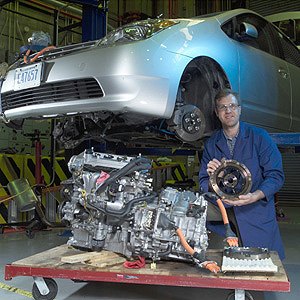
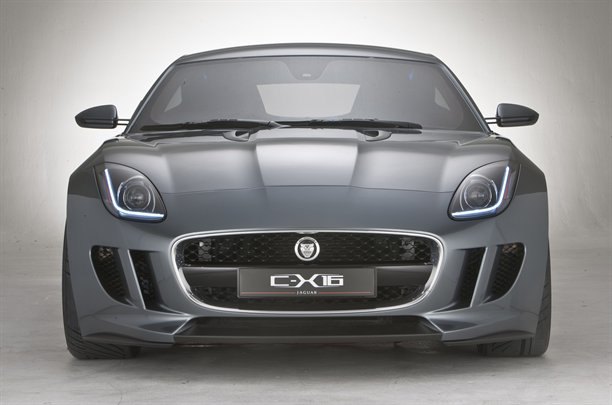
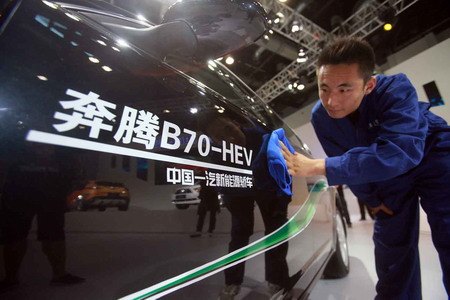



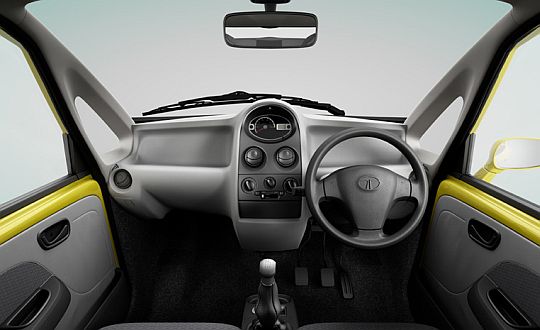
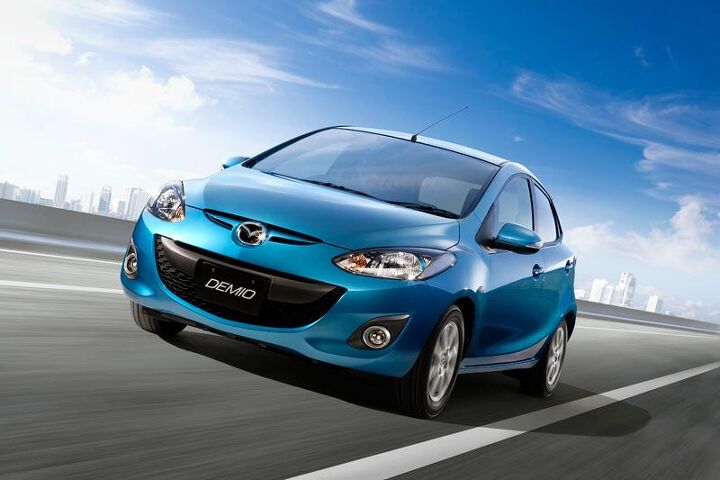
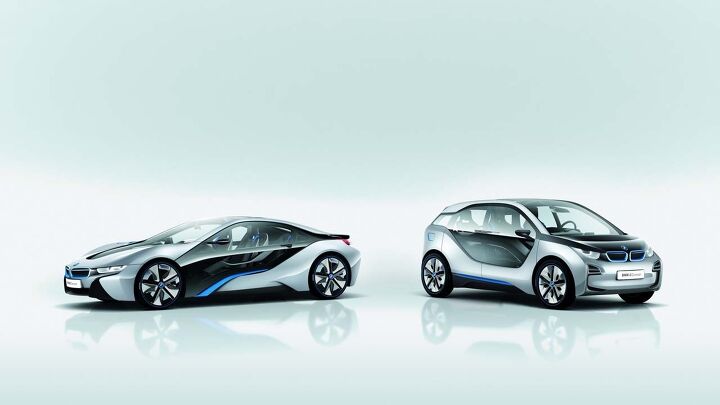





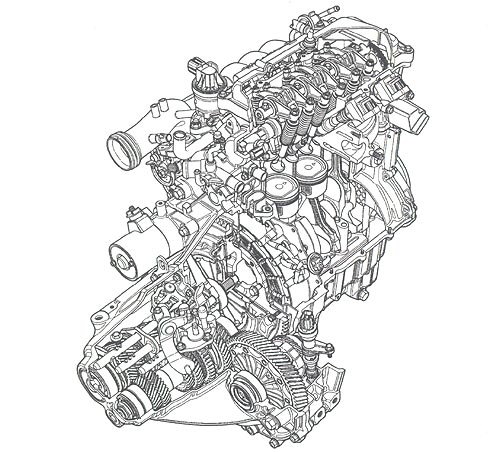






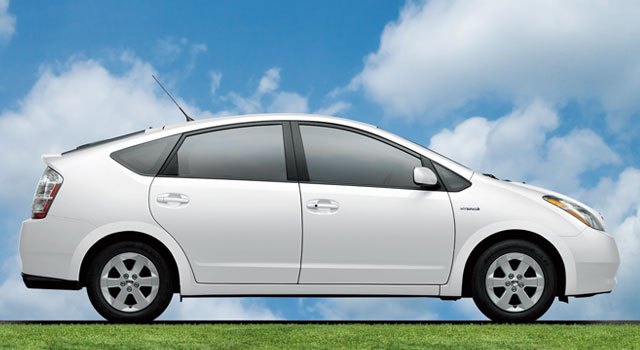


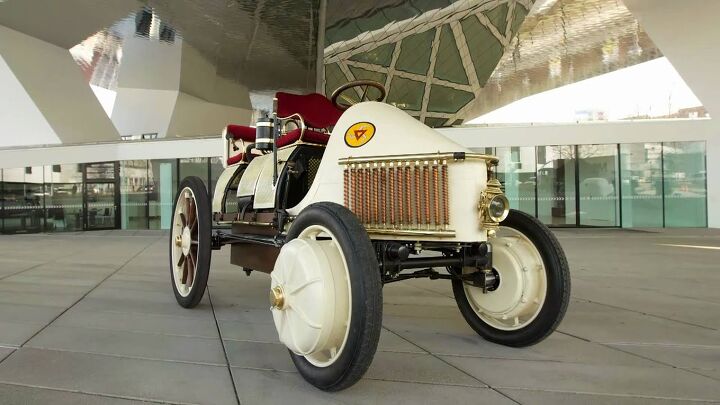


















Recent Comments